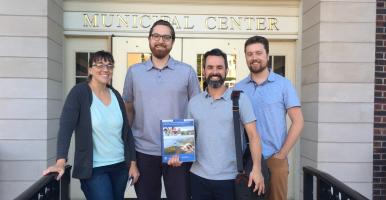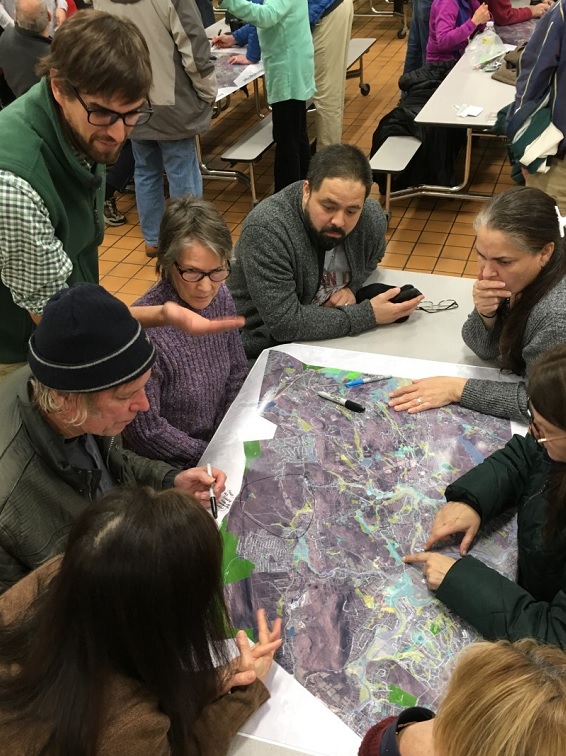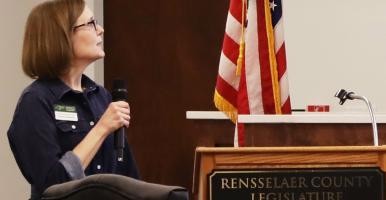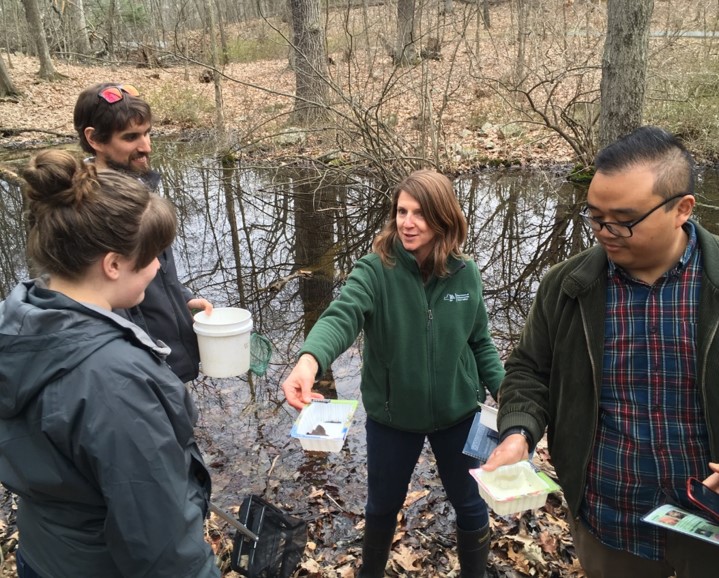Opportunities
Local governments and land trusts play a key role in conserving natural areas and the vital benefits they provide.
With assistance from our team and partners, many municipal officials and volunteers have learned about natural areas in their community, identified conservation goals, and developed practices, plans, and policies that address both local values and regional priorities. We also work with land trusts and other conservation groups, and help to bring partners together to have an even greater impact on sustaining the health and resiliency of the estuary watershed.
Technical Assistance
Our team can provide assistance to municipalities and conservation partners in the estuary watershed to help them:
- interpret and access biological data
- identify conservation priorities
- incorporate biological data and conservation principles into comprehensive plans, natural resources inventories (NRIs), open space plans, and other conservation plans and policies
- implement strategies and plans.
We also help to foster collaborations by joining communities and partners with shared interests, and can advise on assistance and resources available from our colleagues at the Estuary Program who work on watershed management, climate resilience, sustainable shorelines, and other natural resource management interests.
Financial Assistance
The DEC offers competitive Hudson River Estuary Grants to help communities in the watershed develop conservation plans; increase resiliency to flooding; protect water quality; and restore fish and wildlife habitat. Our team works with grantees to ensure successful outcomes; past grant projects have included NRIs, open space inventories, and connectivity plans.
Additional sources of funding for land-use, conservation, climate resiliency, and waterfront planning in the estuary watershed include the Hudson River Valley Greenway, the DEC Climate Smart Communities Program, and the Department of State.
Land acquisition for source water protection and restoration of aquatic connectivity are funded through the DEC Water Quality Improvement Program. Land trusts can also take advantage of the New York State Conservation Partnership Program, which offers competitive matching grants to qualified New York land trusts to advance land conservation, economic development, community conservation, recreation and tourism, and farmland protection.
Learn how municipalities and land trusts are partnering with DEC
to conserve drinking water resources through land acquisition in this short video.
Training
We offer workshops, roundtables, webinars, and other educational opportunities to increase knowledge and capacity for conservation planning in the estuary watershed. Past workshops have offered guidance and training to members of conservation advisory councils and planning boards, land trust staff, and other land-use decision makers on topics such as biological data available for planning; habitat identification; and use of web mappers. We frequently collaborate with partner organizations to deliver programs and reach more audiences, and speak at conferences and other events. Check our calendar for upcoming opportunities, or contact us to be notified by email.
Amphibian Migration Volunteers
In 2009, we developed a program to help raise awareness about woodland pool and forest habitats, habitat connectivity, and amphibian migrations, and to engage volunteers in mitigating the road mortality risks associated with these annual movements.
Volunteers of the Amphibian Migrations & Road Crossings Project monitor roads in the estuary watershed to identify where migration crossings are causing mortality to local amphibian populations. They collect data about weather, traffic, and amphibians; and assist salamanders, frogs, and toads across roads. Their observations will help to inform where conservation actions may be needed to sustain local amphibian diversity and habitat. To learn more, review training materials, and sign up for program updates and migration alerts, visit the project website. We also have a short video about the project on DEC's YouTube channel.




